Custom Gaskets
Enclosure Gaskets
Custom gaskets fabricated to meet unique enclosure requirements
Custom gaskets fabricated to meet unique enclosure requirements
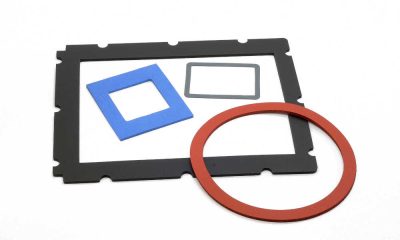
“Electrical enclosure gasket” can refer to the front panel gasket, enclosure door gasket, access panel gasket, gland plate gasket or even the connector gaskets. All are important to consider if the enclosure needs to meet NEMA, IEC IP (Ingress Protection) or UL gasketing (UL 50, UL 50E).
Points to Consider:
What is a NEMA gasket? Technically there aren’t any NEMA gaskets since the enclosure is evaluated as a whole, but there are gaskets and gasket materials that will help an enclosure pass a specified test (NEMA Type).
The NEMA Type gasket reference as it pertains to environmental gasketing refer to NEMA 250 for actual specification. Success of the mentioned material types will greatly depend on the enclosure design.
NEMA Enclosure Gaskets
| NEMA Type | Description | Common Material Types |
|---|---|---|
| Type 1 | Basic, indoor enclosure, protects from dust and falling dirt. | Open cell or closed cell foams, closed cell sponges |
| Type 2 | Indoor enclosure, protects against dust and falling dirt as well as dripping/light splashing of water. | Fine pitched open cell (microcellular) foams or closed cell foams, closed cell sponges |
| Type 3 | Indoor / outdoor enclosure, protects against windblown dust and falling dirt. Also protects against water (rain, sleet, snow and effects of ice formation). | Closed cell foams or closed cell sponges |
| Type 4 | Indoor / outdoor enclosure, protects against windblown dust and falling dirt. Also protects against water (rain, sleet, snow, splashing water and hose directed water) and effects of ice formation. | Closed cell foams or closed cell sponges |
| Type 5 | Indoor / outdoor enclosure, protects against falling dirt, settling airborne dust, lint, fibers and flying debris. Also protects against water (rain, sleet, snow, splashing water and hose directed water) and effects of ice formation. | Closed cell foams or closed cell sponges |
| Type 6 | Indoor / outdoor enclosure, protects against falling dirt. Also protects against water (hose directed water and the entry of water during prolonged submersion at a limited depth) and effects of ice formation. | Closed cell foams, closed cell sponges, low and mid durometer solid elastomers |
| Type 12 | Indoor enclosure (w/o knockouts, 12K w/ knockouts), protects against falling dirt, settling airborne dust, lint, fibers and flyings. Also protects against water (dripping and light splashing). | Fine pitched open cell (microcellular) foams or closed cell foams, closed cell sponges |
| Type 13 | Indoor enclosure, protects against falling dirt, settling airborne dust, lint, fibers and flying debris. Also protects against water (dripping and light splashing). Some of protection against spraying/splashing/seepage of oil and coolants. | Chemical compatible closed cell sponge |
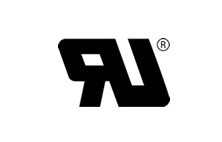 What is a UL gasket? A UL gasket is made with a material that has been evaluated by Underwriters Laboratories (UL) for use in an enclosure. UL looks at range of material configurations such as o-rings, flexible cellular gaskets, facings, sheet material and poured-in-place gaskets. Physical property test include tensile strength, elongation, compression set, tensile set, hardness, and low temperature. Material are also aged and exposed to various environments. This is the major difference between UL testing, NEMA and IP where gaskets are not explicitly evaluated.
What is a UL gasket? A UL gasket is made with a material that has been evaluated by Underwriters Laboratories (UL) for use in an enclosure. UL looks at range of material configurations such as o-rings, flexible cellular gaskets, facings, sheet material and poured-in-place gaskets. Physical property test include tensile strength, elongation, compression set, tensile set, hardness, and low temperature. Material are also aged and exposed to various environments. This is the major difference between UL testing, NEMA and IP where gaskets are not explicitly evaluated.
UL 50 Type as it pertains to environmental gasketing refer to UL for actual specification. Success of the mentioned material types will greatly depend on the enclosure design.
UL 50 Enclosure Gaskets
| UL 50 Type | Description | Common Material Types |
|---|---|---|
| Type 1 | Basic, indoor enclosure, protects from dust and falling dirt. | UL qualified, open cell or closed cell foams, closed cell sponges |
| Type 2 | Indoor enclosure, protects against dust and falling dirt as well as dripping/light splashing of water. | Fine pitched open cell (microcellular) foams or closed cell foams, closed cell sponges |
| Type 3 | Indoor / outdoor enclosure, protects against windblown dust and falling dirt. Also protects against water (rain, sleet, snow and effects of ice formation). | UL qualified, closed cell foams or closed cell sponges |
| Type 4 | Indoor / outdoor enclosure, protects against windblown dust and falling dirt. Also protects against water (rain, sleet, snow, splashing water and hose directed water) and effects of ice formation. | UL qualified, closed cell foams or closed cell sponges |
| Type 5 | Indoor / outdoor enclosure, protects against falling dirt, settling airborne dust, lint, fibers and flyings. Also protects against water (rain, sleet, snow, splashing water and hose directed water) and effects of ice formation. | UL qualified, closed cell foams or closed cell sponges |
| Type 6 | Indoor / outdoor enclosure, protects against falling dirt. Also protects against water (hose directed water and the entry of water during prolonged submersion at a limited depth) and effects of ice formation. | UL qualified, closed cell foams, closed cell sponges, low and mid durometer solids |
| Type 12 | Indoor enclosure (Type 12 without knockouts, Type 12K with knockouts), protects against falling dirt, settling airborne dust, lint, fibers and flyings. Also protects against water (dripping and light splashing). | UL qualified, fine pitched open cell (microcellular) foams or closed cell foams, closed cell sponges |
| Type 13 | Indoor enclosure, protects against falling dirt, settling airborne dust, lint, fibers and flyings. Also protects against water (dripping and light splashing). Some of protection against spraying/splashing/seepage of oil and coolants. | UL qualified, chemical compatible closed cell sponge |
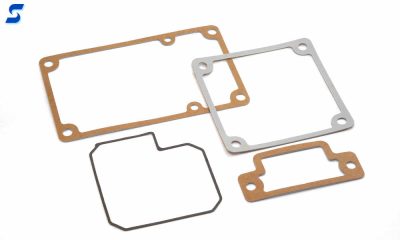 What is IP? IP is the international standard for Ingress Protection for electrical enclosures. The intentions of the IP Code are similar to NEMA and UL – to offer levels of protection against ingress of foreign objects and water as it pertains to electrical enclosures. There are some differences between IP, UL 50 and NEMA.
What is IP? IP is the international standard for Ingress Protection for electrical enclosures. The intentions of the IP Code are similar to NEMA and UL – to offer levels of protection against ingress of foreign objects and water as it pertains to electrical enclosures. There are some differences between IP, UL 50 and NEMA.
IP 6X – The first digit refers to solid particle (e.g. 6specifically refers to dust and water)
IP X1 – The second digit refers to water (e.g. 1 specifically refers to dripping water)
Example: IP54 refers to an electrical enclosure capable of sealing out dust, water and protect against vertically dripping water.
Below are common IP specifications for which Stockwell Elastomerics regularly manufactures gaskets. Refer to the IEC 60529 standard for details such as water pressures, flow rate, distance and duration. The function of materials mentioned greatly depends on enclosure design and compression. Please contact Stockwell Elastomerics for guidance on gasket design for IP enclosures.
IP Enclosure Gaskets
| IP Spec | 1st Digit | 2nd Digit | Common Material Types |
|---|---|---|---|
| IP53 | 5 Protect from dust and water, some dust ingress allowed but not to interfere with function | 3 Protect from spraying water (angle up to 60° from vertical) | Closed cell foams, closed cell sponges, microcellular foams |
| IP63 | 6 Completely protected from dust and water ingress | 3 Protect from spraying water (angle up to 60° from vertical) | Closed cell foams, closed cell sponges, microcellular foams |
| IP64 | 6 Completely protected from dust and water ingress | 4 Protect from splashing water (from any direction) | Closed cell foams, closed cell sponges, solid rubber |
| IP65 | 6 Completely protected from dust and water ingress | 5 Protect from pressure jets of water (from any direction) | Closed cell sponges, closed cell foam, solid rubber |
| IP66 | 6 Completely protected from dust and water ingress | 6 Protect from strong pressure jets of water (from any direction) | Closed cell sponges, closed cell foam, solid rubber |
| IP67 | 6 Completely protected from dust and water ingress | 7 Protect while temporarily submerged (up to 1 meter) | Solid rubber |
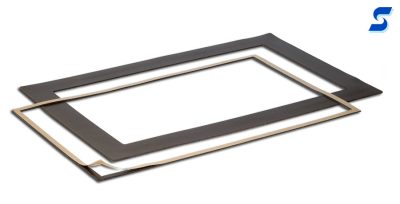 Conductive EMI enclosure gaskets are manufactured regularly at Stockwell Elastomerics. Commercial applications, not held to Mil specifications, typically use nickel graphite filled silicone. Nickel graphite particles are mixed into silicone polymers and cured into conductive rubber sheets or rolls. Large EMI enclosure gaskets can be made with strips or interlocking strips to maximize the yield. Click EMI Gasket Materials for ESD, EMI, and electrically conductive materials technical data sheets.
Conductive EMI enclosure gaskets are manufactured regularly at Stockwell Elastomerics. Commercial applications, not held to Mil specifications, typically use nickel graphite filled silicone. Nickel graphite particles are mixed into silicone polymers and cured into conductive rubber sheets or rolls. Large EMI enclosure gaskets can be made with strips or interlocking strips to maximize the yield. Click EMI Gasket Materials for ESD, EMI, and electrically conductive materials technical data sheets.
For gaskets required to meet MIL-DTL-83528, the polymer and the conductive fill are defined by these common MIL-DTL-83528 fill and polymer specifications:
Stockwell Elastomerics regularly applies 3M 9713 or 3M 9719 conductive adhesive to stock or custom EMI gasket material to make enclosure gaskets.
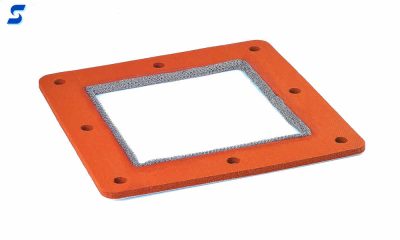 The majority of EMI gaskets and RFI gaskets produced by Stockwell Elastomerics serve the dual functions of EMI attenuation and environmental gasketing. Large sheet metal enclosures with a wider tolerance range may require thick, soft gasketing material to achieve a water seal. Stockwell Elastomerics manufactures EMI gaskets from a variety of soft, closed cell, silicone sponges or silicone foams and knitted Monel mesh cord (QQ-N-281). The wire mesh cord is bonded to the interior or exterior wall of the gasket to achieve the EMI shielding.
The majority of EMI gaskets and RFI gaskets produced by Stockwell Elastomerics serve the dual functions of EMI attenuation and environmental gasketing. Large sheet metal enclosures with a wider tolerance range may require thick, soft gasketing material to achieve a water seal. Stockwell Elastomerics manufactures EMI gaskets from a variety of soft, closed cell, silicone sponges or silicone foams and knitted Monel mesh cord (QQ-N-281). The wire mesh cord is bonded to the interior or exterior wall of the gasket to achieve the EMI shielding.
Key Features
Shielding db:
| 100 KHz | 45 |
|---|---|
| 500 KHz | 110 |
| 10 MHz | 115 |
| 1 GHz | 95 |
Stockwell Elastomerics manufactures gaskets for plastic enclosures from gasket materials that are soft to account for low closure forces. Typical plastic enclosures requiring soft gaskets include; handheld device gaskets, junction box gaskets, battery compartment gaskets, and touch screen bezel gaskets.
Submerged plastic enclosures – most commonly use 10 or 20 durometer silicone gaskets. Silicone is one of the few gasket materials with low durometers that contain no plasticizers. Plasticizers can leach and cause crazing of certain plastics.
Wash down plastic enclosures – IP64 or IP65 often use closed cell sponges or closed cell foams. Expanded polymers allow for water sealing with low compressive forces.
Dust gaskets for plastic enclosures – expanded urethane foam (PORON®) and neoprene sponge are often specified for dust gaskets. PORON is preferred over neoprene due to its resistance to compression set. PORON is also offered in a wider thickness and firmness range.
Plastic enclosures are particularly sensitive to closure forces and bowing between fasteners or latches. As with any enclosure, proper material selection and proper compression of the gasket are paramount. Stockwell Elastomerics offers engineering assistance and cut samples for testing.
Contact Us for further assistance with custom enclosure gaskets including custom for electrical enclosures, NEMA enclosures, UL 50 enclosures, EMI enclosures, IP enclosures, battery enclosures and plastic enclosures.